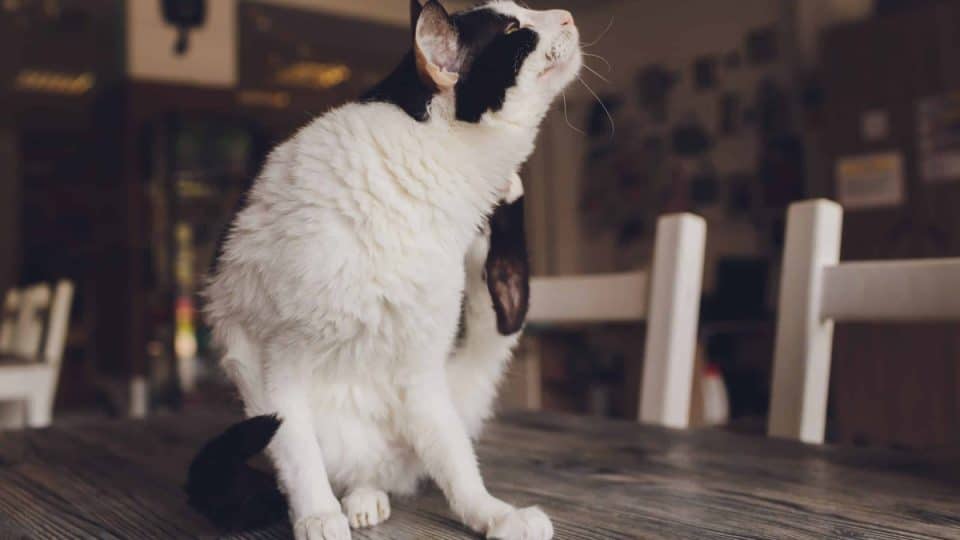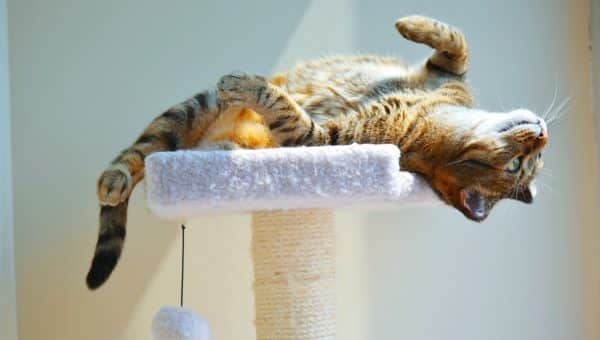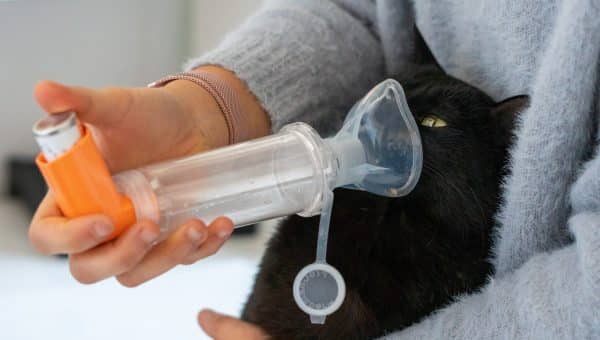- Not a substitute for professional veterinary help.
Is your kitty shaking their head and pawing at their ears? Sounds like you might have a cat with an ear infection on your hands. Feline ear infections are fairly common in indoor and outdoor cats. But they’re not as straightforward as a cat parent might expect. Typically, there’s an underlying, damage-causing condition allowing bacteria and fungus to thrive. So, it’s important to see your vet to treat the infection and the condition that brought the infection on in the first place.
Plus, ear infections are irritating to a cat. They can be painful, which explains why your cat is fed up with their itchy ears. Other signs of ear infections in cats include redness of the ear, funky discharge, and even an unusual odor wafting from the ears. When the infection is in the inner ear, you might spot neurological signs and symptoms, too.
If you’re unsure if your cat could have an ear infection, have questions about treatment options and prevention, or are just curious about the what-ifs of cat care—read on for your guide to ear infections in cats.
Cat Ear Infection Symptoms
As the National Emergency Specialty Director at AmeriVet Veterinary Partners, Dr. Louis DelGiudice is no stranger to ear infections in cats (AKA feline otitis). He says ear infections cause pain and discomfort to your cat, so it’s important to consult a vet right away if you suspect your cat has one. An ear infection probably doesn’t mean a trip to the ER, but this is one condition you don’t want to “wait and see” on.
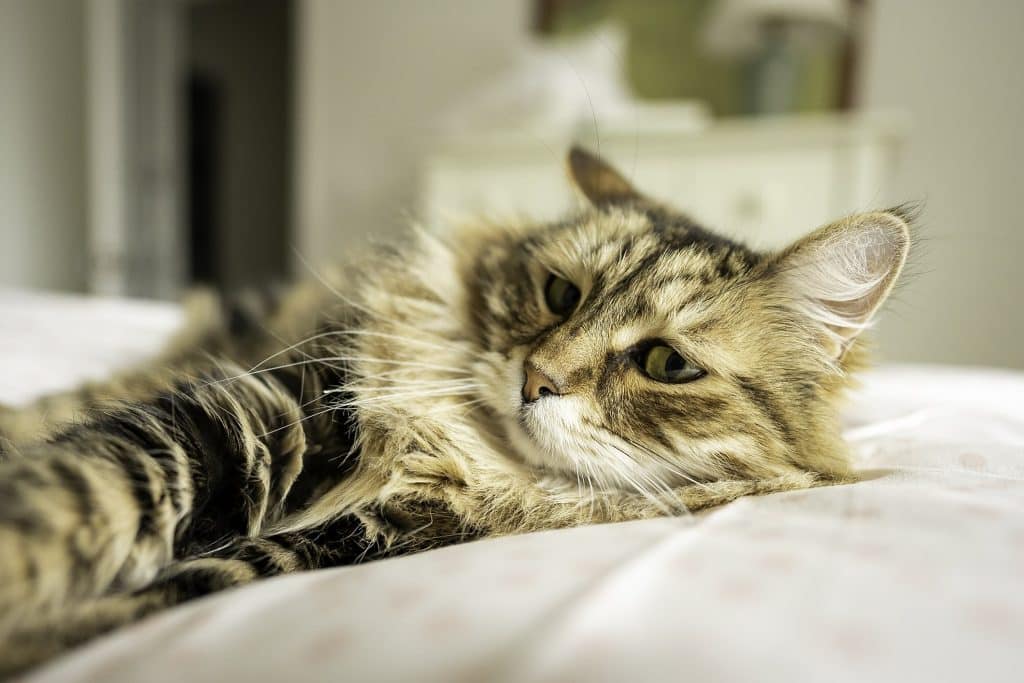
iStock/Christine McCann
Ear infections don’t all have the same cause, and they’re not all located in the same part of the ear. This means they’ll come with different signs and symptoms. These symptoms of a cat ear infection include the following.
Symptoms in and around the ear
- Ear discharge. The color and consistency vary from yellow and creamy to dark brown.
- Swelling and redness. Look for swelling and redness of the ears and inside the ear canal. They might also be warm to the touch.
- Waxy build-up. When the ear infection is mite-related, brown waxy debris is a common sign.
- Unusual odor. It will come from one or both ears, depending on the extent and cause of the infection.
Symptoms not in the ear
- Head shaking
- Pawing at the ears
- Head tilting
- Hearing loss or deafness
- Loss of balance
- Disorientation
Types of Cat Ear Infections
Your cat’s ear is made up of three parts: outer or external ear, middle, and inner. The outer ear includes the cute little ear flap and canal. The middle ear begins where the ear canal stops—at the tympanic membrane (AKA the eardrum). The inner ear is deep in a cat’s skull, connecting to the brain via nerves.
Ear infections can occur in all three parts of the ear:
- External ear: otitis externa. The most reported cause of external ear infections is a common parasite—ear mites.
- Middle ear: otitis media. Infections of the middle ear don’t always indicate an infection in the external ear. However, if a cat has reoccurring external ear infections, it might point to an untreated infection in the middle ear.
- Inner ear: otitis interna. This is the least commonly reported ear infection in cats but can also be the most serious. Inner ear infections can lead to deafness and neurological issues.
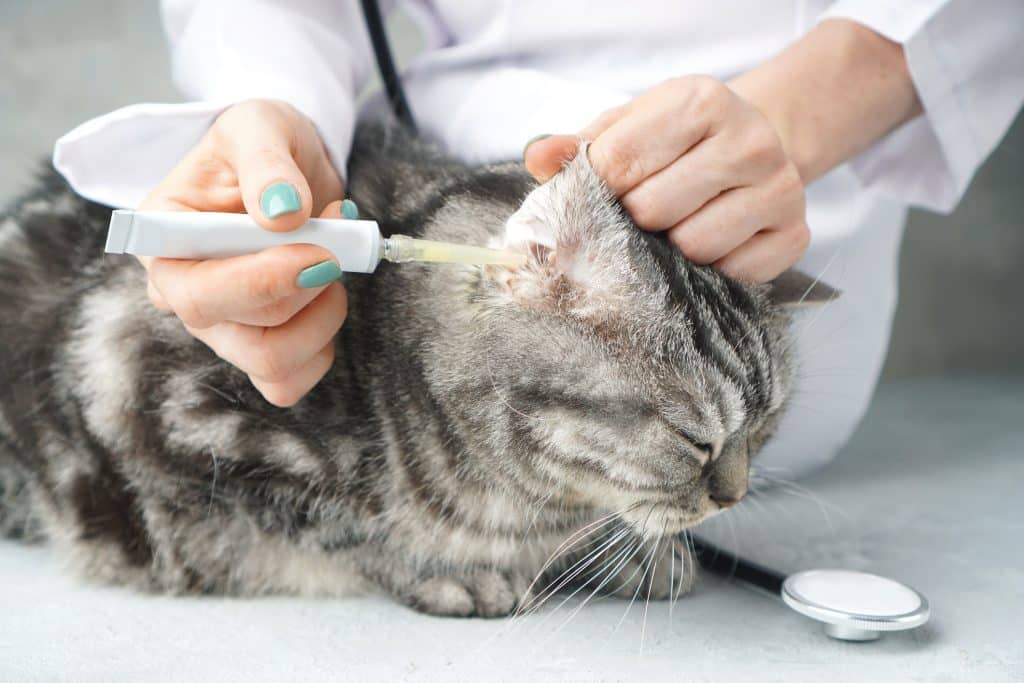
iStock/Dmytro Varavin
Cat Ear Infection Causes and Treatments
According to Dr. DelGiudice, diagnosing the cause of an ear infection can be a multi-faceted approach. “Along with a physical exam and an examination of the ear canal with an otoscope, your veterinarian will perform a cytology of material from the ear,” he explains. This means they’ll take a sample of cells to diagnose the specific strain of bacteria or fungus.
In situations of a foreign body, mass, or other cause of the infection, your vet might order imaging (CT or MRI), complete a blood panel, and/or biopsy the mass.
Primary causes of ear infections and their treatments
According to Dr. Sandra Koch, DVM, College of Veterinary Medicine at the University of Minnesota, the primary cause of feline ear infections is “usually the inciting agent directly causing damage or disease in a normal ear canal.”
- Ear mites (Otodectes cynotis). Ear mites are responsible for almost half of the external ear infections reported in cats. Treatment includes a vet-prescribed spot-on treatment and anti-fungal or antibiotic treatment if there’s a secondary infection.
- Keratinization disorders (idiopathic ceruminous otitis). AKA the production of excess earwax. Dr. Koch notes that some cats produce excess earwax without causing infections. Removing it without your vet’s recommendation could cause more harm than good. When infections do occur, your vet may prescribe steroids.
- Feline allergies. Including seasonal allergies, food allergies, and contact allergies. Talk to your vet about eliminating irritating allergens and consider a food elimination trial when reactions persist year-round.
- Foreign bodies. Dr. Koch notes that foreign bodies aren’t commonly associated with ear infections in cats. But when they are, they’re usually plant material like fox tail. Treatment includes identification and removal of the material and treatment of any secondary infections.
- Masses. Including abnormal cell growth, polyps, and ceruminous cystomatosis (a congenital ear disease causing the growth of lesions). Treatment varies based on diagnosis but may include steroids, surgical removal, and treating any secondary infections.
- Autoimmune diseases. Such as pemphigus foliaceus. Your vet will discuss an overall approach to managing the disease.

iStock/CasarsaGuru
Secondary causes of ear infections and their treatments
“These factors cause disease in an already abnormal ear and contribute to otitis,” Dr. Koch says.
- Fungus. Including Malassezia, Aspergillus, and Candida. Treatment of cat ear yeast or fungal infections includes systemic antifungal medicine (oral or injection), antifungal eardrops, and/or medicated ear flushes.
- Bacteria. Such as Staphylococcus, Streptococcus, Pasteurella, and Pseudomonas. According to Dr. Koch, “several months of systemic antibiotics may be needed.” For other cat ear bacterial infections, your vet may prescribe a dose of antibacterial eardrops.
Predisposing factors for a cat ear infection
According to Dr. Koch, these factors don’t actually cause ear infections in cats, but they do increase the risk of cats developing and experiencing chronic ear infections.
- Systemic diseases. Including feline leukemia virus (FeLV), feline immunodeficiency virus (FIV), feline diabetes, and cancer. Your vet will discuss an overall approach to managing the disease.
- Environmental factors. Wet, humid conditions can predispose a cat to ear infections. Adventure cats who enjoy swimming and breeds of cats requiring routine baths could be prone to ear infections if not dried properly.
Perpetuating factors in ear infections
Even when primary and secondary factors are resolved, perpetuating factors can allow ear infections to persist.
- Over cleaning. Too much ear cleaning could irritate your cat’s ears, making them more suspectable to infections. So, talk to your vet before starting an ear-grooming routine.
- Physical trauma. From scraping their ear on a branch to getting into a brawl, any ear trauma could lead to an infection.
In addition to treating the infection and underlying cause, Dr. DelGiudice says your veterinarian may prescribe anti-inflammatory and pain medication. If there’s gunk in your cat’s ear preventing ear drops from doing their job, your vet might also prescribe a daily cleaning agent. Overall, he adds, the prognosis is good. Straight-forward infections could clear within two weeks of starting treatment.

iStock/Boyloso
What’s The Difference Between An Ear Infection & Ear Mites?
Signs of mites in your cat’s ears don’t always mean your cat has an ear infection, but it does mean a prompt trip to the vet is due. They’re highly contagious (between pets, not people!), and a few critters can become an infestation quickly. Plus, the damage from all your cat’s scratching could lead to the growth of bacteria and/or fungus—and that’s when ear mites can lead to a pesky ear infection.
Signs your cat has an infection and not just mites include a foul odor from the ear(s) and signs of discharge. However, if they have discharge that looks like dark, grainy coffee grounds, this can indicate a buggy presence but not necessarily an ear infection.
If no infection is diagnosed, Dr. William Miller Jr., VMD, a professor of dermatology at Cornell University’s College of Veterinary Medicine says your vet might give the A-OK to treat the mites at home with a drop of baby oil a few times a day.
By the way, ear mites are most common in cats who venture outdoors. But because they’re so contagious, can easily spread from one pet to another and make their way indoors.
What if my cat gets chronic ear infections?
Does your cat have an ear infection that won’t go away? “When [feline ear infections] are chronic or recurrent, it is usually because the primary cause of contributing factors has not been properly addressed,” Dr. Koch says.
How To Apply Cat Ear Drops
Did your vet prescribe cat ear infection medicine? With the right technique, readying yourself and your cat for ear drops doesn’t need to be a dreaded experience.
- Prepare yourself and your cat. If your cat really doesn’t like being held or getting medicine, consider using a towel or blanket to gently wrap them like a cute kitty burrito. Have treats on hand to reward your cat during and after. And if your cat hides at the sound of the medicine drawer opening, return the ear drops to a different spot each time you use them.
- Ready the ear. Gently hold your cat’s ear flap, pulling it back slightly to expose the ear canal. You should be able to place the tip of the dropper or ointment tube slightly inside the canal. To avoid damage to the eardrum, do not place the entire tip of the tube into the ear canal.
- Administer the medication. Still holding the ear flap open, drip the prescribed amount of medication into your cat’s ear.
- Massage the ear. Remove the medicine dropper and with one finger behind the base of the ear and the other in front, gently massage the ear.
- Talk with your vet. If you’re still having issues giving your cat ear drops or ointment, talk to your vet about tips, tricks, and alternative treatments.
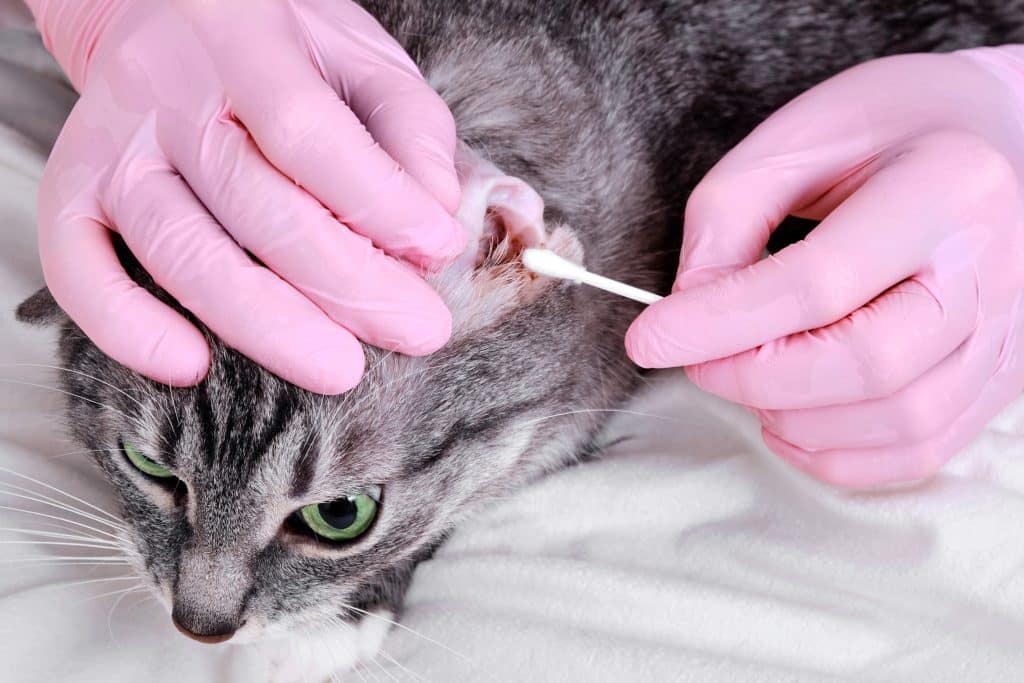
iStock/Andrey Zhuravlev
How To Prevent A Cat Ear Infection
Checking your cat’s ears for unusual discharge, debris, or redness is the best way to prevent an ear infection at home. At the first sign of anything unusual, chat with your vet. Never stick anything in your cat’s ears without speaking to an expert.
If your vet recommends periodic or regular ear cleanings, these cat ear cleaners are sure to get the job done. Follow your vet’s guidance to properly clean your cat’s ear, which might include massaging the wash into the ear and gently wiping the ear with a cotton ball.
And for kitties prone to head-scratching infections, working with your veterinarian to treat the underlying cause is the best method for prevention.
